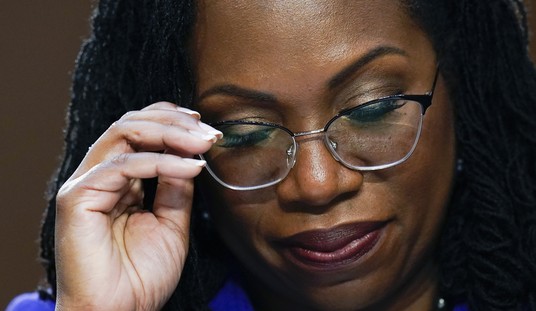It being the first day of a new year, some modicum of cheer is in order. I’ll come to that in due course. But first, another George Santayana moment. Santayana, you’ll remember, famously said that “Those who cannot remember the past are condemned to repeat it.” I am often reminded of good old George these days as one discredited idea after the next bubbles up from the cauldron of “progressive” certitude and slouches towards Washington to be reborn.
Last week I had occasion to contrast some reminders from Thomas Sowell about the mischief caused by government intervention into the economy during the Great Depression with some animadversions from Arianna Huffington about the dangers we supposedly face from “laissez-faire capitalism.”
This week’s program features the same tune, but with different singers. Occupying the spot filled by Thomas Sowell is Robert Tracinski, whose article “The Fraud of Government Intervention” perfectly captures my own sense of astonishment that the utterly discredited idea of central planning seems to be making a comeback. Mr. Tracinski quotes one “progressive” who boldly declares that “As liberals, as progressives it is imperative that we fight for planning. It’s time we rehabilitate the concept of long-term planning.”
Hello? As Mr. Tracinski asks, “Can anyone really be saying this in the 21st century?” ‘Fraid so. Doubtless Mr. Tracinski is correct that an idea that has such a discreditable history could only make inroads among the historically illiterate, but it’s no secret that historical illiteracy is a growth industry in the US of A. As an antidote, Mr. Tracinski points readers to the amusing satirical website The People’s Cube, where readers can get some advance notice about what a government-run auto industry might look like.
On a more sober note, Mr. Tracinski points out that the the choice is not between planning and no planning but between the inefficient, freedom-destroying planning of a centralized authority and the dispersed planning that emerges naturally from the economic activities of individuals pursuing their own multifarious ends. “Planning,” he points out, “is what is already done in a free economy by millions of private individuals. Every economic decision they make is a plan about how to allocate the only money and effort they have a right to dispose of: their own. And these plans are made with full access to the only kind of information that is really relevant: the context of their own lives and values.”
Another word for this complex process is capitalism, a.k.a., the market, that “extended order of cooperation” whose power and productivity Friedrich Hayek extolled.
The market, with all its untidy freedom, is exactly what the central-planners abhor. If Robert Tracinski is this week’s Thomas Sowell, this week’s Arianna Huffington is the pop sociologist Thomas Frank, who was given a column in The Wall Street Journal to tell readers why “The ‘Market’ Isn’t So Wise After All.” Mr. Frank sarcastically remembers “the old days when it all seemed to work”–“it” being “the market, with its fantastic self-regulating powers,” the “boldly soaring banner of laissez-faire,” etc. That’s all over now, he says. Really?
The next time someone bemoans the evil of “laissez-faire capitalism” to you, utter the number 69,428. That’s the number of pages in the 2006 edition of the Federal Register, the official government compendium of rules and regulations, the handy-dandy list of things you must do, and not do, if you want to do . . . well, just about anything. “Laissez faire” is the bogey man unhappy leftists use to frighten the credulous. Capitalism was never completely unregulated, and it certainly isn’t unregulated now. In fact, we have much more to fear from the ethic of “défendre faire”–the nanny-state ethic whose ultimate goal is to turn us all into wards of the state. Thomas Frank criticizes rating agencies like Moody’s and banks like Washington Mutual for being insufficiently regulated. But the real problem was not lack of regulation but unintelligent and overbearing regulation. Mr. Frank derides those who believe that “all sin originates with the Community Reinvestment Act” (on which see here), but really he should pause to consider the disastrous effects of that piece of government regulation which, by intruding into the orderly operation of the market in order to further a utopian social goal, helped to precipitate the global credit crisis of 2008.
I mentioned Hayek a moment ago. The really depressing thing about all the renewed calls for increased government intervention, more regulation, and bailouts for all is what it portends for the future of freedom. In an epigraph for The Road to Serfdom, Hayek quoted David Hume’s observation that “It is seldom that liberty of any kind is lost all at once.” The biggest challenge we face today is not to our stock portfolios or 401K accounts (renamed “201K accounts” by one wag) but rather the psychological conditions for political liberty, among which a spirit of individual initiative, i.e., taking responsibility for oneself and one’s family, figures prominently. That spirit of liberty may be the most important casualty of bailout mentality that has become mantra of the week for progressives. “The most important change which extensive government control produces,” Hayek observes, “is a psychological change, an alteration in the character of a people.” It doesn’t happen all at once. You don’t, in a modern democracy, go to bed free on Friday and wake up in chains on Saturday. It takes, Hayek notes, “perhaps. . . one or two generations” and even then the chains are more likely to be moral and spiritual than physical. Where do you suppose we are in the process? The crucial point, Hayek says, is that “the political ideals of a people and its attitude toward authority are as much the effect as the cause of the political institutions under which it lives. This means, among other things, that even a strong tradition of political liberty is no safeguard if the danger is precisely that new institutions and policies will gradually undermine and destroy that spirit.”
If you ask where it all tends, what the change or alteration that socialism (i.e., “extensive government control”) brings about in the character of a people, you need look no further than Hayek’s title: The Road to Serfdom. Hayek, though he provided us with the most thoroughgoing anatomy of this phenomenon, wasn’t the first to notice this. As he notes, the idea, like the title of his book, comes from Tocqueville’s famous discussion of “democratic despotism,” that paternalistic, infantalizing power that
extends its arms over society as a whole . . . [covering] its surface with a network of small, complicated, painstaking, uniform rules through which the most original minds and the most vigorous souls cannot clear a way to surpass the crowd; . . . it does not tyrannize, it hinders, compromises, enervates, extinguishes, dazes, and finally reduces each nation to being nothing more than a herd of timid and industrious animals of which the government is the shepherd.
I hesitate to trot out this passage once more–it is so familiar. And yet as I listen to false prophets like Arianna Huffington and Thomas Frank, as I watch the U.S. government get into the automobile industry, the banking business, the insurance business, and God knows what else, I wonder whether it is really all that familiar after all. One of Barack Obama’s most cherished goals is to nationalize health care. Today, George Will has a dismaying column on that misbegotten socialist scheme. Bottom line: “if you think health care is expensive now, just wait until it is free.”
“But wait,” you are thinking, “You said you had some cheerful news to impart.” And so I do. One of the most unpleasant aspects of the economic turmoil we have been going through is the unremitting drumbeat of gloominess–half apocalyptic, half gleeful–supplied obbligato-like by the media. Operating on the principle that bad news sells, they have become a veritable dispensary of gloom. Every negative bit of news is eagerly seized upon and trumpeted from the hilltops while all the good news is ignored or given only cursory acknowledgment. “What good news?” you ask. Well, my friend John Allison of Unio Holdings circulated a quick and illuminating inventory under the title “The Tide is Turning.” He hasn’t posted it on-line yet but has given me leave to share it.
Growing all around us is a mounting tide of positive developments that is getting lost in an atmosphere of fear, uncertainty, and foreboding.
These positive developments are enormous. They are neutralizing the financial crisis. They are putting limits on the depth of the economic contraction. Although over the past 18 months the twin financial and recessionary crises appeared to have been bigger than all of us, especially policy-makers, we are reversing the relationship. We are becoming bigger than the crises. The most sensitive indicator that this hypothesis is correct or not will be the stock market — which closed at 8668 on the Dow and 891 on the S&P 500 yesterday [i.e., December 30, 2008].
With so many intelligent and eloquent people speaking so pessimistically (for example a few weeks ago two prognosticators of the current crisis, Meredith Whitney and Nouriel Roubini, wrote articles in the Financial Times stating, to use the words of one of them, that they had “never been more bearish.”); and with quite a bit more bad news to come in 2009 via the mortgage market, commercial real estate, corporate bankruptcies, segments of the banking world, further economic slowdown and unemployment, and deteriorating corporate profits, how can one say that the tide is turning more positively?
I, too, would be worried if my negative expectations about the future were not only being validated by reality but were increasing because reality was turning out to be even worse than I expected. But the opposite is happening. Like any realist, I see big problems ahead. But more and more the reality of bad news is being offset by the reality of actions that are counteracting the bad news.
In the past 8 weeks or so the following events have occurred:
- Bank solvency has been largely addressed
- A template for shoring up weakened banks is in place with Citibank
- Financial liquidity (bank to bank lending) has been restored
- The LIBOR/T-Bill relationship is getting close to historical norms
- Depositors have stayed put as a result increased deposit insurance
- Money market funds have been stabilized through similar measures
- The commercial paper market is flowing via the Fed
- A $200 billion facility to enable consumer debt securitization is in place
- The Fed is purchasing $500 billion of high grade mortgage paper to free up that market
- The Fed has begun to purchase impaired assets — a hint of what may be coming
- Interest rates are effectively zero
To be sure, some of those data points are more reassuring than others (is an interest rate of zero a healthy thing?), but I think John’s optimism is well founded. Now if we can just coax the termite army of leftists back into to their holes . . . A project for another day (or year or two). For now, I leave you with all best wishes for a Happy New Year!









Join the conversation as a VIP Member